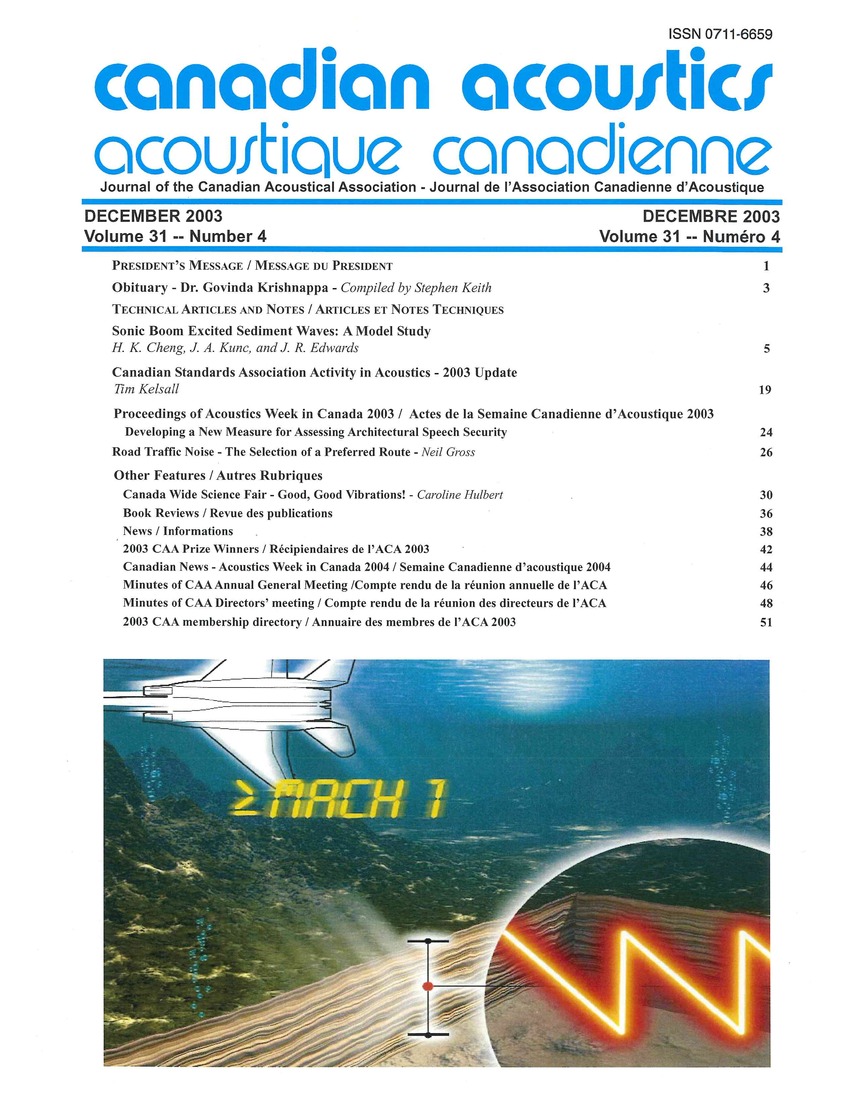Sonic Boom Excited Sediment Waves: A Model Study
Keywords:
Acoustic fields, Acoustic wave propagation, Arrays, Computational methods, Computer simulation, Elastic moduli, Hydrophones, Numerical analysis, Problem solving, Resonance, Sediments, Underwater acoustics, Waveform analysis, Sediment waves, Wave fieldsAbstract
Sonic boom excited sediment waves are investigated with a model of interacting wave fields comprising water of finite depth and an elastic medium representing the sediment. The latter is assumed to be uniform, isotropic and semi-infinite in extent. The free modes are found to be dispersive, resulting in a finite (non-vanishing) resonance speed range. The study recognizes the difference in the far-field behavior between the excited resonance mode and the wave group of free modes: whereas the excited underwater wave of the resonance mode propagates at the same speed as the sonic-boom air load and remains in the form of a monochromatic wave train, the wave group of the free modes disperses into a wave packet and attenuate with increasing distance and time. Examples of a sediment model of fine sand with sonic boom waves at two flight Mach numbers are discussed. Differences and similarities between the present analysis and Desharnais and Chapman's study are noted.Additional Files
Published
How to Cite
Issue
Section
License
Author Licensing Addendum
This Licensing Addendum ("Addendum") is entered into between the undersigned Author(s) and Canadian Acoustics journal published by the Canadian Acoustical Association (hereinafter referred to as the "Publisher"). The Author(s) and the Publisher agree as follows:
-
Retained Rights: The Author(s) retain(s) the following rights:
- The right to reproduce, distribute, and publicly display the Work on the Author's personal website or the website of the Author's institution.
- The right to use the Work in the Author's teaching activities and presentations.
- The right to include the Work in a compilation for the Author's personal use, not for sale.
-
Grant of License: The Author(s) grant(s) to the Publisher a worldwide exclusive license to publish, reproduce, distribute, and display the Work in Canadian Acoustics and any other formats and media deemed appropriate by the Publisher.
-
Attribution: The Publisher agrees to include proper attribution to the Author(s) in all publications and reproductions of the Work.
-
No Conflict: This Addendum is intended to be in harmony with, and not in conflict with, the terms and conditions of the original agreement entered into between the Author(s) and the Publisher.
-
Copyright Clause: Copyright on articles is held by the Author(s). The corresponding Author has the right to grant on behalf of all Authors and does grant on behalf of all Authors, a worldwide exclusive license to the Publisher and its licensees in perpetuity, in all forms, formats, and media (whether known now or created in the future), including but not limited to the rights to publish, reproduce, distribute, display, store, translate, create adaptations, reprints, include within collections, and create summaries, extracts, and/or abstracts of the Contribution.


